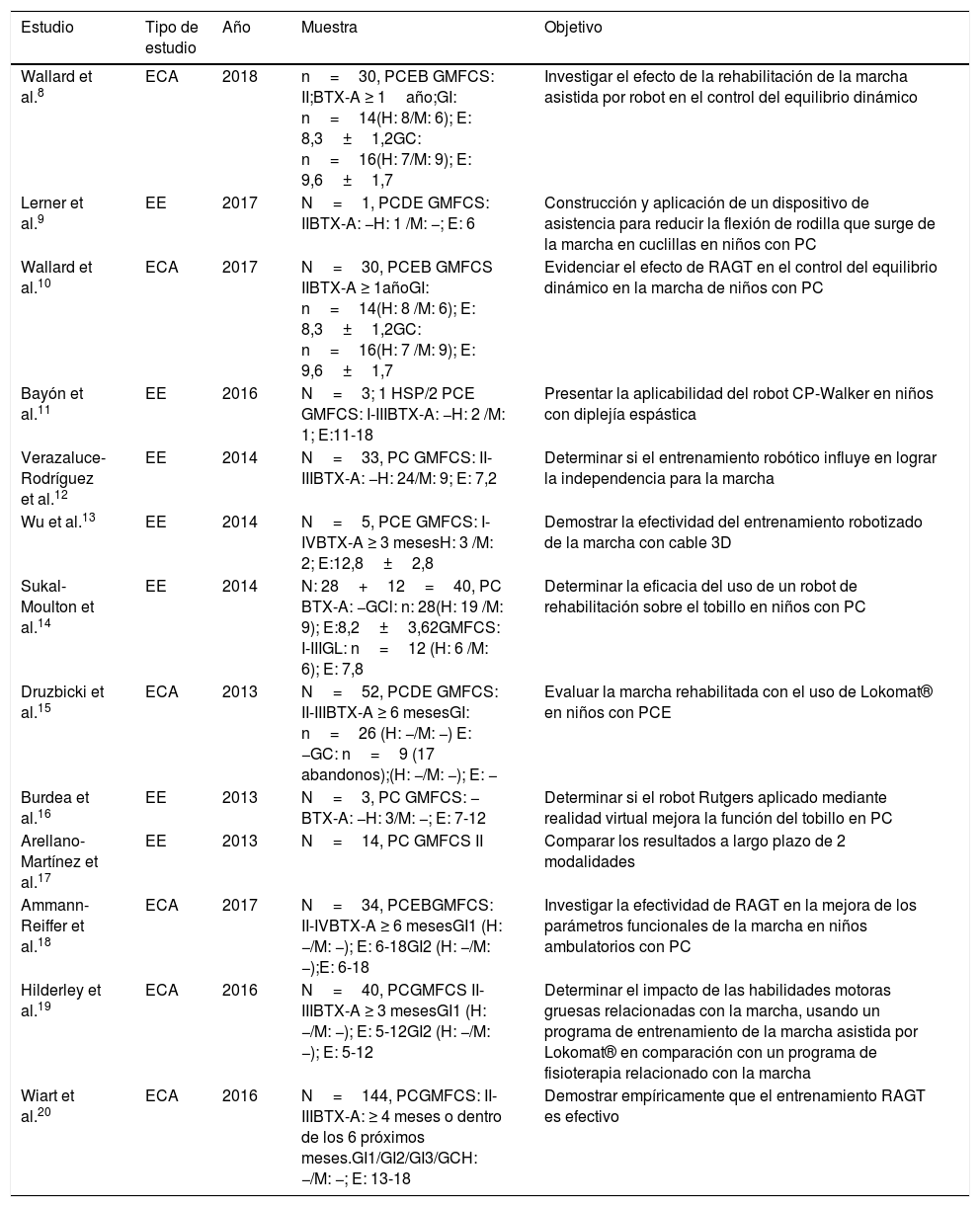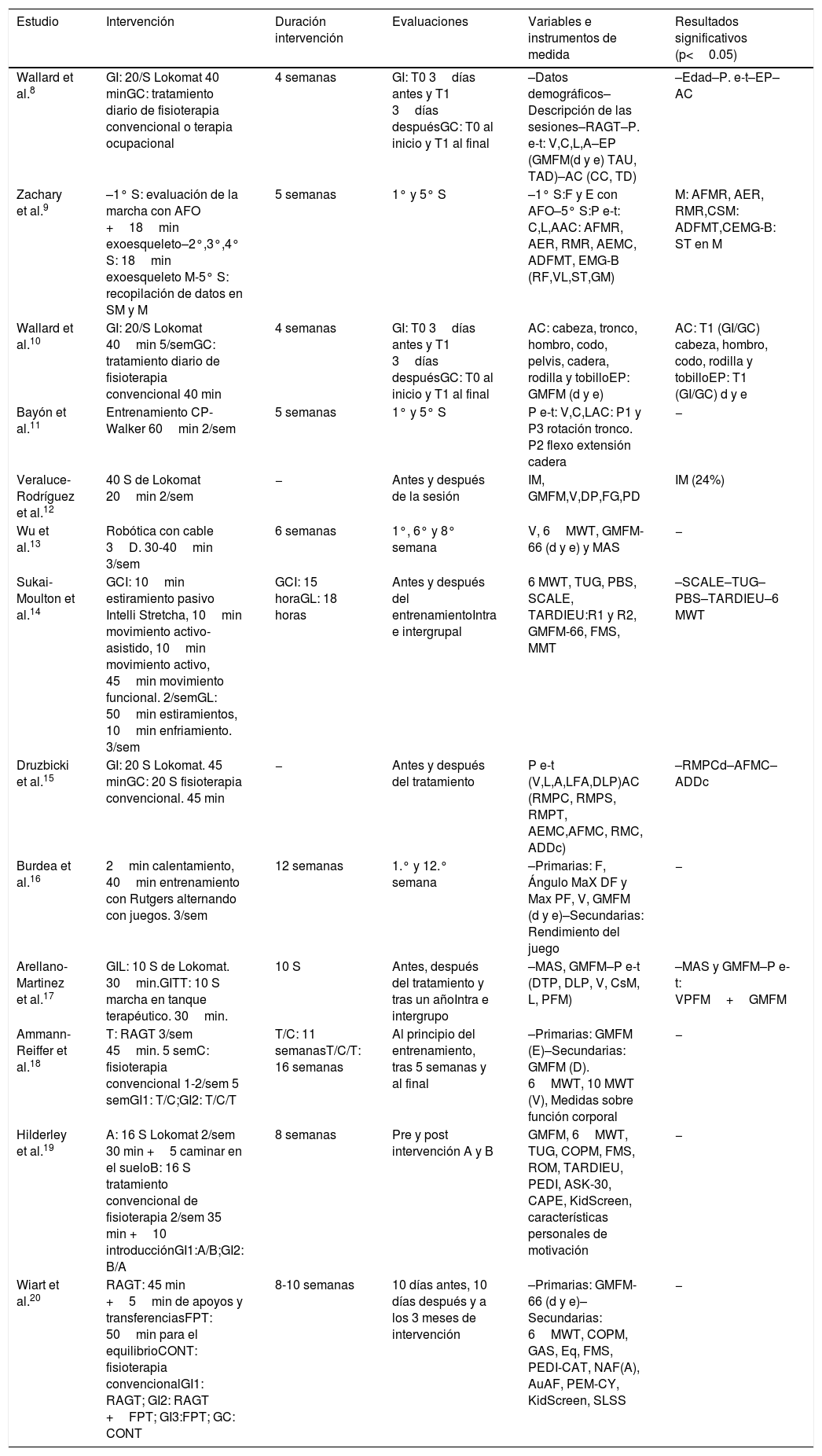La parálisis cerebral se corresponde con la discapacidad motora más común en la infancia. Su incidencia se estima en 2 de cada 1.000 niños nacidos vivos y afecta en gran medida a la marcha. El objetivo de los programas de rehabilitación es promover mayores niveles de independencia en el individuo afectado, sobre todo en movilidad, y para ello se han diseñado programas de rehabilitación de la marcha asistida por robot. Por lo tanto, el objetivo de este trabajo es conocer los beneficios de la robótica en la rehabilitación de la marcha en la parálisis cerebral.
Material y métodosSe ha realizado una búsqueda bibliográfica empleando los términos MeSH: «cerebral palsy», «robotics» y «gait».
ResultadosTras aplicar los criterios de selección, se obtienen 10 estudios de investigación y 3 protocolos que analizan los beneficios de la robótica en la parálisis cerebral, demostrando que su uso aporta grandes ventajas.
Cerebral palsy is the most common motor disability in childhood, with an estimated incidence of two out of every 1,000 live births. The impairment mostly affects gait. The aim of rehabilitation programmes is to enhance independence in affected individuals, especially mobility. To do this, robot-assisted gait rehabilitation programmes have been developed. Therefore, this study aimed to identify the benefits of robotics in gait rehabilitation in cerebral palsy.
Material and methodsWe performed a literature search using the MeSH terms «cerebral palsy», «robotics» and «gait».
ResultsAfter applying the selection criteria, we obtained 10 research studies and three protocols analysing the benefits of robotics in cerebral palsy and demonstrating that their use provides major advantages.










